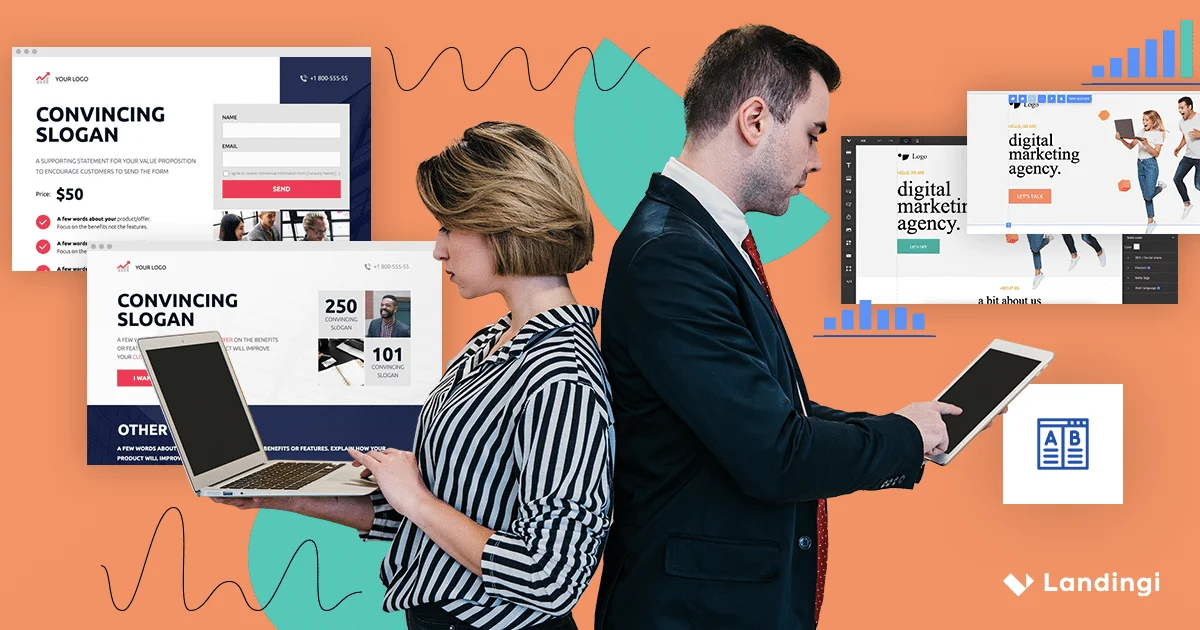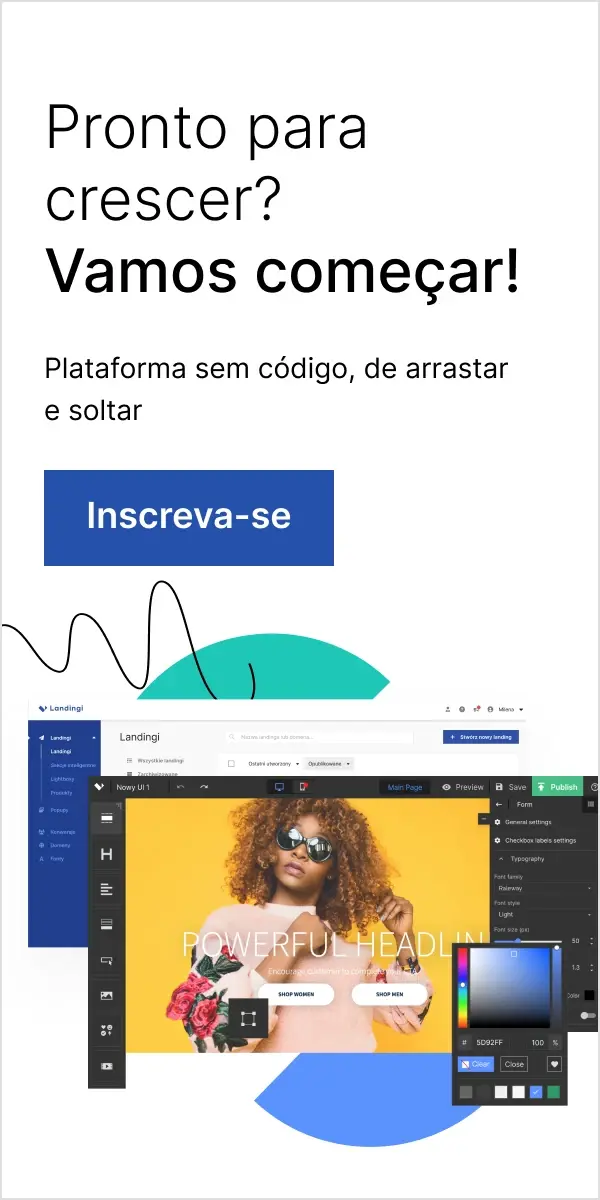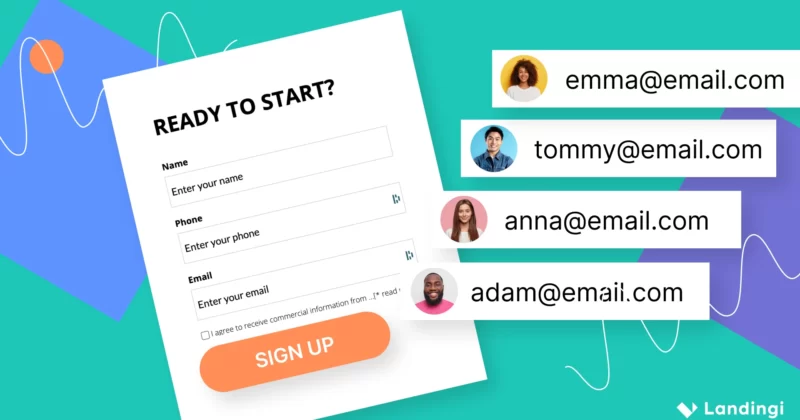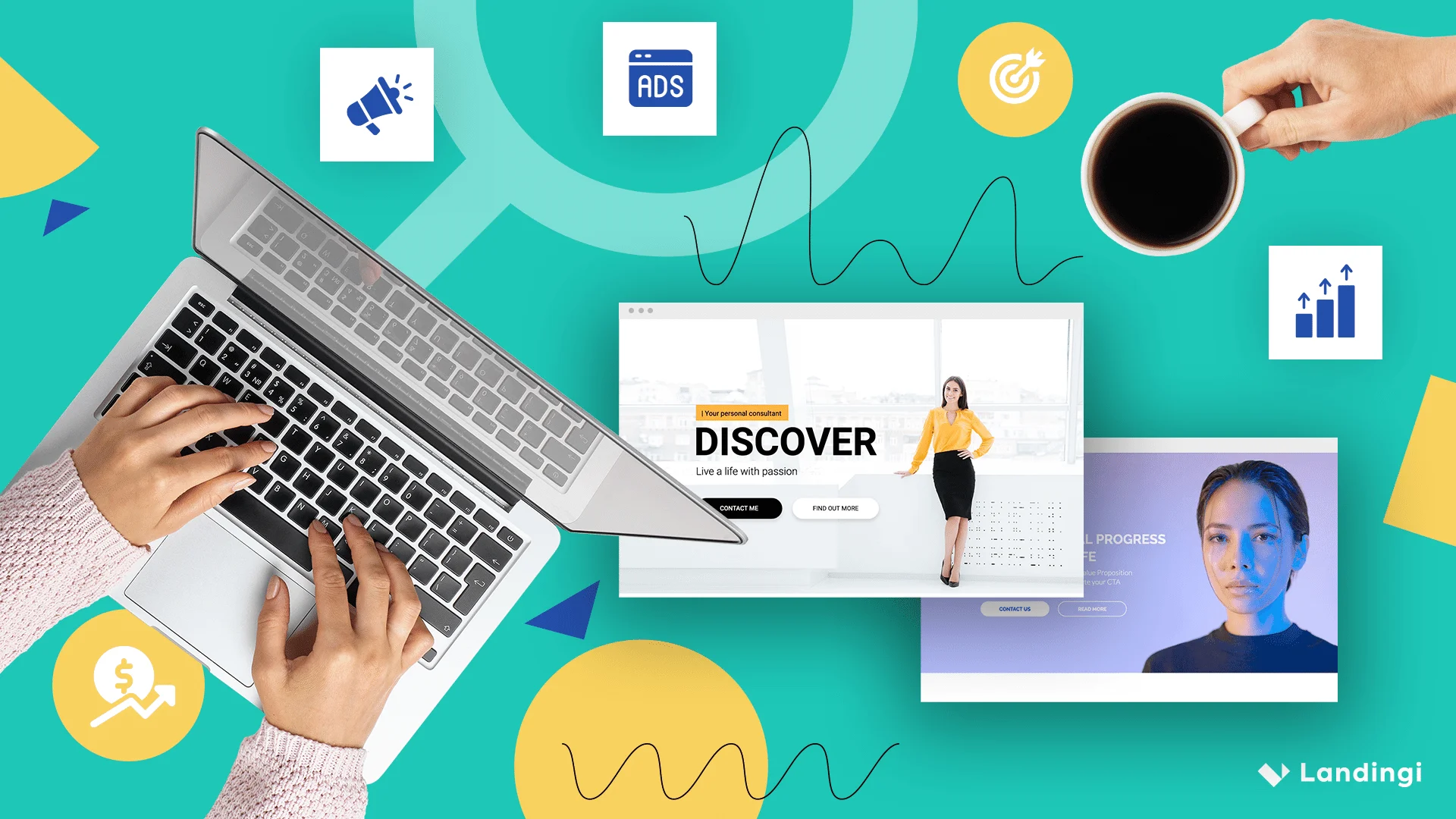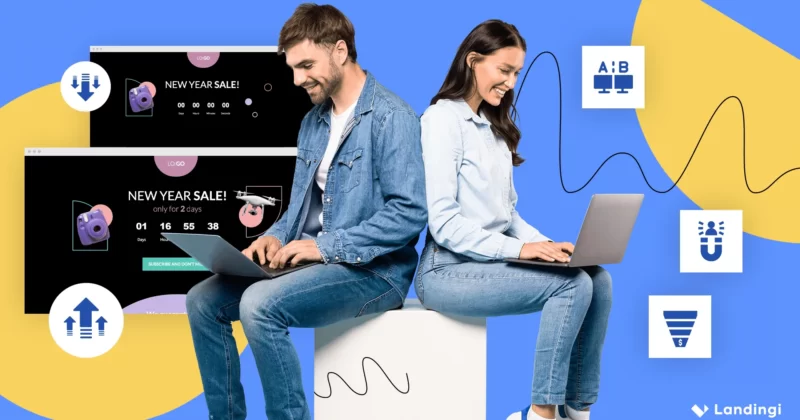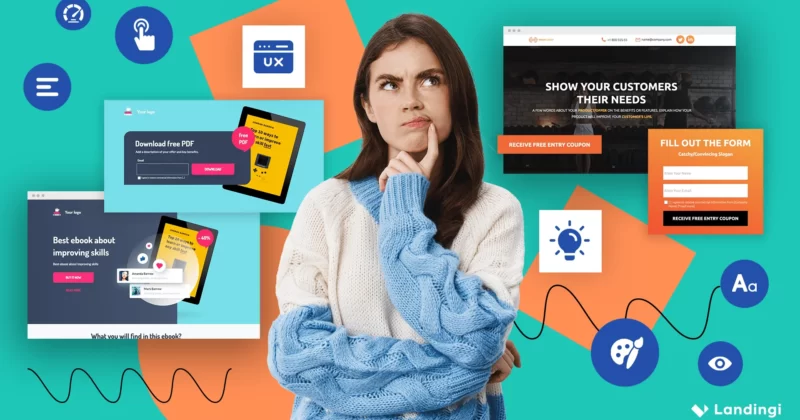Are you in search of a solution to enhance conversions, elevate user interaction, and rocket your online success to the next level? Look no further than A/B testing tools, the secret weapon to unlocking your website’s potential. Harnessing the power of data-driven optimization, you can make informed decisions and refine your digital presence to a tee. In this blog post, we will delve into the top 10 split testing software for conversion optimization, guiding you towards the ideal solution for your unique needs.
From landing pages to email campaigns, mobile apps to e-commerce websites, and user experience optimization to advanced analytics, these solutions cover all bases. By the end of this journey, you’ll be armed with the knowledge to select the perfect multivariate testing software and catapult your online business to unprecedented heights.
We’re kicking off our comparison with Landingi, a landing page builder that’s perfect for conducting split tests. Its unique strength lies in its ability to optimize landing pages, which are one of the most commonly tested website types. Landingi stands out for its intuitive user interface, making it a breeze even for beginners to create and test different landing page versions, ultimately optimizing them for the best possible conversion rates.
Below, you can find a list of the top 10 A/B testing tools:
Category | Tool |
1. Best A/B Tool For Landing Pages | |
2. Best A/B Tool for E-commerce Websites | |
3. Best A/B Tool for Mobile Apps | |
4. Best A/B Tool for Email Campaigns | |
5. Best A/B Tool for User Experience (UX) Optimization | |
6. Best A/B Tool for Small Businesses | |
7. Best A/B Tool for Large Enterprises | |
8. Best A/B Tool with AI Capabilities | |
9. Best A/B Tool for Multi-channel Testing | |
10. Best A/B Tool for Reporting and Analytics |
Which A/B Testing Tools Are Considered Industry Leaders?
Several A/B testing tools have gained a reputation as industry leaders due to their comprehensive features, user-friendly interfaces, and proven results. 10 top contenders include:
- Landingi
- Shoplift
- Google Firebase
- Mailchimp
- Optimizely
- VWO
- Adobe Target
- AB Tasty
- Dynamic Yield
- Crazy Egg
Selecting an A/B testing tool primarily hinges on your requirements and goals. By evaluating the features, pricing, and support resources of these industry-leading tools, you can make an informed decision and select the best solution for your conversion rate optimization.
Let’s take a closer look at these 10 solutions and explore their features in detail.
Use as Smart Sections para trabalhar de forma inteligente em várias landing pages ao mesmo tempo e esqueça as tediosas revisões manuais! Uma maneira simples de gerenciar alterações em massa.
1. Best A/B Tool for Landing Pages: Landingi
The best A/B tool for landing pages is Landingi. It excels in this area due to its user-friendly interface and specialized features that allow marketers to quickly create and test different landing page designs to optimize for higher conversion rates.
When it comes to optimizing landing pages, Landingi offers:
- intuitive tool for multivariate testing
- pixel-perfect landing page builder
- quick duplication and modification capabilities
- AI Assistant (AI-powered tool for copy, SEO, and image editing)
- EventTracker for in-app data analysis
- dynamic text
- campaign scheduler
Moreover, Landingi’s user-friendly interface offers a range of features that make it easy to create and publish landing pages:
- visual editor
- 400+ pre-designed, customizable templates
- mobile-friendly design options
- customization without coding skills
- 170+ integrations
- professional human support
- comprehensive knowledge base
Landingi’s pricing options suit different requirements. The Free plan is the initial option that allows you to publish one landing page for free. If you want to publish more pages and conduct A/B testing, consider upgrading to the Lite plan, starting at $29 per month or $290 per year. The Professional plan is available for $49 per month and comes with 50,000 visits per month and 10 custom domains. The Agency plan costs $149 per month and offers 50,000 visits per month, 20 custom domains, Audit Log records, and unlimited subaccounts. The Enterprise solution is the most comprehensive and costs $1,000 per month. All plans come with unlimited conversions and are fully-featured, meaning that you can leverage all optimization options, including A/B testing, regardless of the subscription you choose.
If you’re looking for A/B testing tools that are specifically designed to optimize landing pages, Landingi should be at the top of your list, as it is a builder that specializes in such websites.
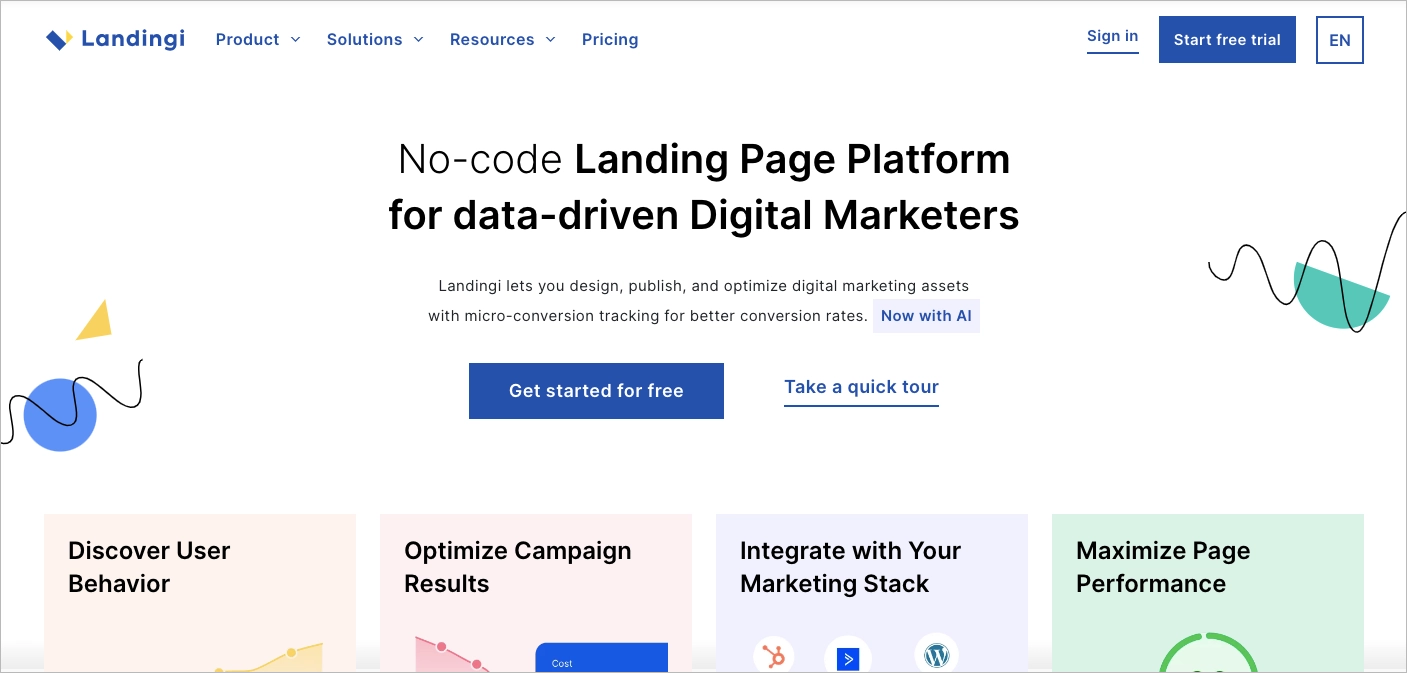
2. Best A/B Tool for E-commerce Websites: Shoplift
Best A/B tool for e-commerce is Shoplift. It integrates directly with e-commerce platforms, enabling online retailers to easily modify and test different elements of their product pages or checkout process. This can lead to significant improvements in cart abandonment rates and overall sales conversions.
Shoplift offers:
- integration with Shopify templates
- test recommendations
- Lift Assist for template enhancement
- advanced segmentation and reporting
Shoplift offers a tailored pricing model designed to support Shopify stores in enhancing their conversion optimization efforts. The Starter plan begins at $149 monthly, catering to stores with up to 50,000 visitors, and includes unlimited A/B tests. For stores aiming to maximize their advertising ROI, the Growth plan is available at $299 per month, accommodating up to 100,000 visitors and also offering unlimited tests. The Scale plan, priced at $499 per month, is ideal for high-growth businesses, removing session limits and providing a dedicated representative alongside the unlimited testing feature.
All plans are geared towards empowering e-commerce sites with the tools necessary for detailed A/B testing, a pivotal component of conversion rate optimization.
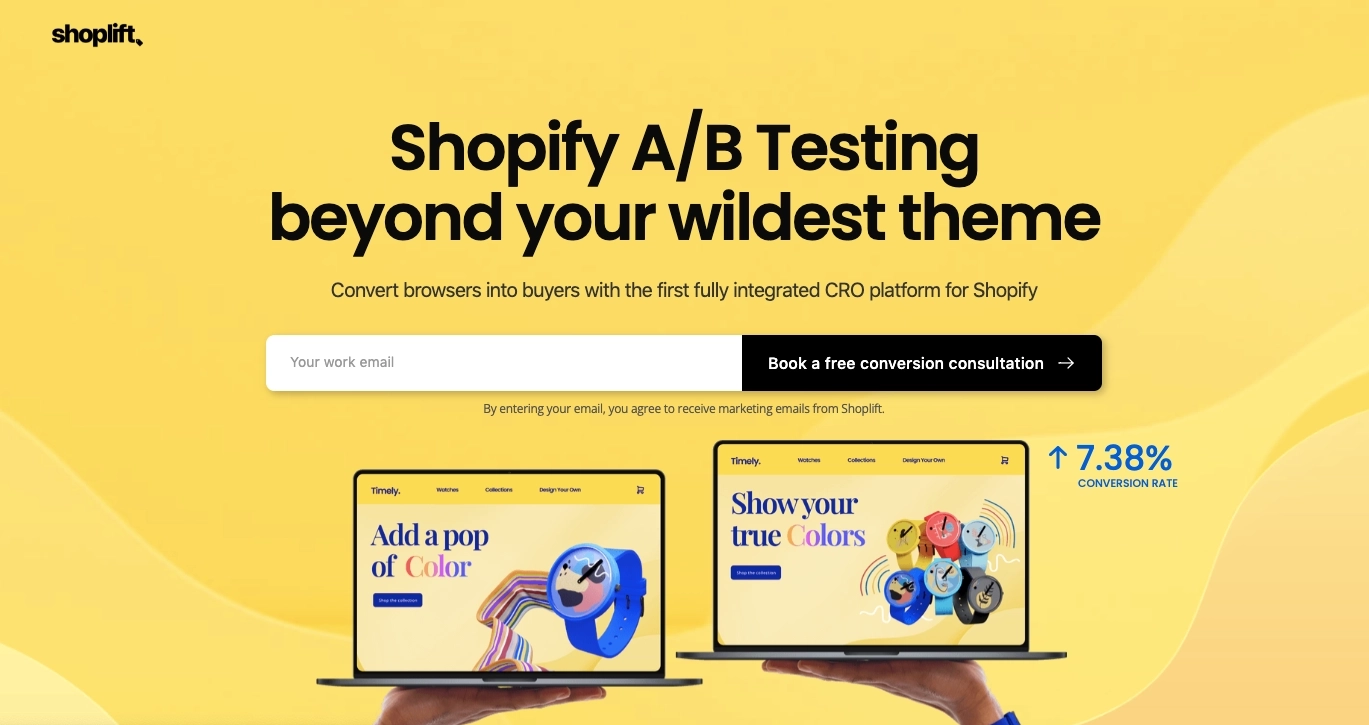
3. Best A/B Tool for Mobile Apps: Google Firebase
Best A/B tool for mobile apps is Google Firebase. It provides a complete set of tools that enable A/B testing, as well as analytics, crash reporting, and user engagement features. Its A/B testing service is seamlessly integrated with other Firebase features, providing a comprehensive understanding of an app’s performance and user behavior.
Firebase A/B Testing offers the following features:
- dividing users into distinct groups
- delivering tailored versions of the app to each group
- measuring the effect of modifications
- dynamic page placements
- integration with Remote Config
Google Firebase’s pricing starts with a no-cost Spark plan that includes a suite of products such as A/B Testing, Analytics, and Cloud Messaging. For more extensive requirements, the Blaze plan operates on a pay-as-you-go model, where you only pay for the resources you use, with certain no-cost allowances included from the Spark plan.
This flexible pricing ensures that whether you’re just starting out or scaling up, you have access to Firebase’s powerful features for optimizing user experience and conversion rates, including A/B testing capabilities, without upfront costs. If you’re in search of a comprehensive suite for app development with an emphasis on growth and conversion optimization, Google Firebase presents a compelling, cost-effective solution.
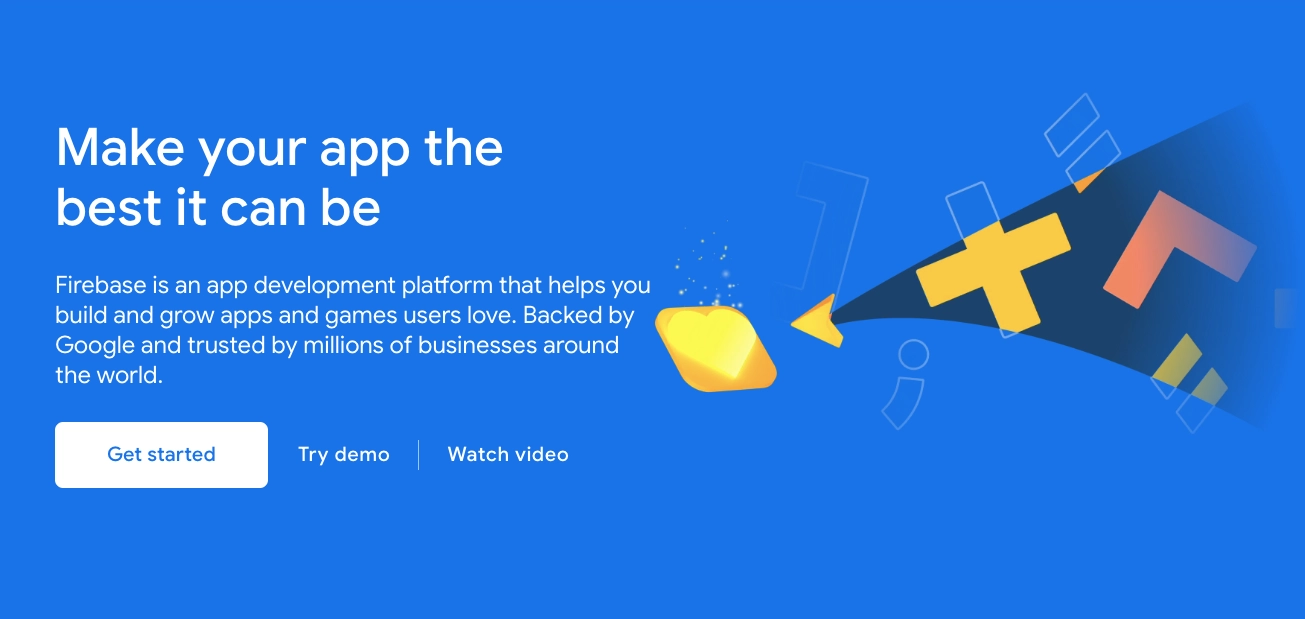
4. Best A/B Tool for Email Campaigns: Mailchimp
Best A/B tool for email campaigns is Mailchimp. Known for its ease of use and user-friendly approach, Mailchimp allows marketers to test different subject lines, email content, and sending times. This is crucial for marketers looking to improve their open rates, click-through rates, and ultimately, conversions from email marketing efforts.
Mailchimp provides A/B testing features for:
- subject lines
- content
- from names
- send-times in email campaigns
- newsletter multivariate tests
Mailchimp starts with a free plan that supports up to 1,000 monthly email sends, which is ideal for new businesses exploring email marketing. For those looking to expand their reach and refine their campaigns, the Essentials plan begins at $13 per month, offering up to 5,000 email sends. Scaling up, the Standard plan starts at $20 per month, providing advanced features like multivariate testing, comparative reporting, and advanced segmentation, which are key for conversion rate optimization. For large-scale operations, the Premium plan starts at $350 per month, offering unlimited users and unlimited audiences.
All paid plans include A/B testing features, ensuring that every email campaign can be optimized for the highest conversion rates, making Mailchimp a strong contender for those focused on conversion rate optimization through email marketing.
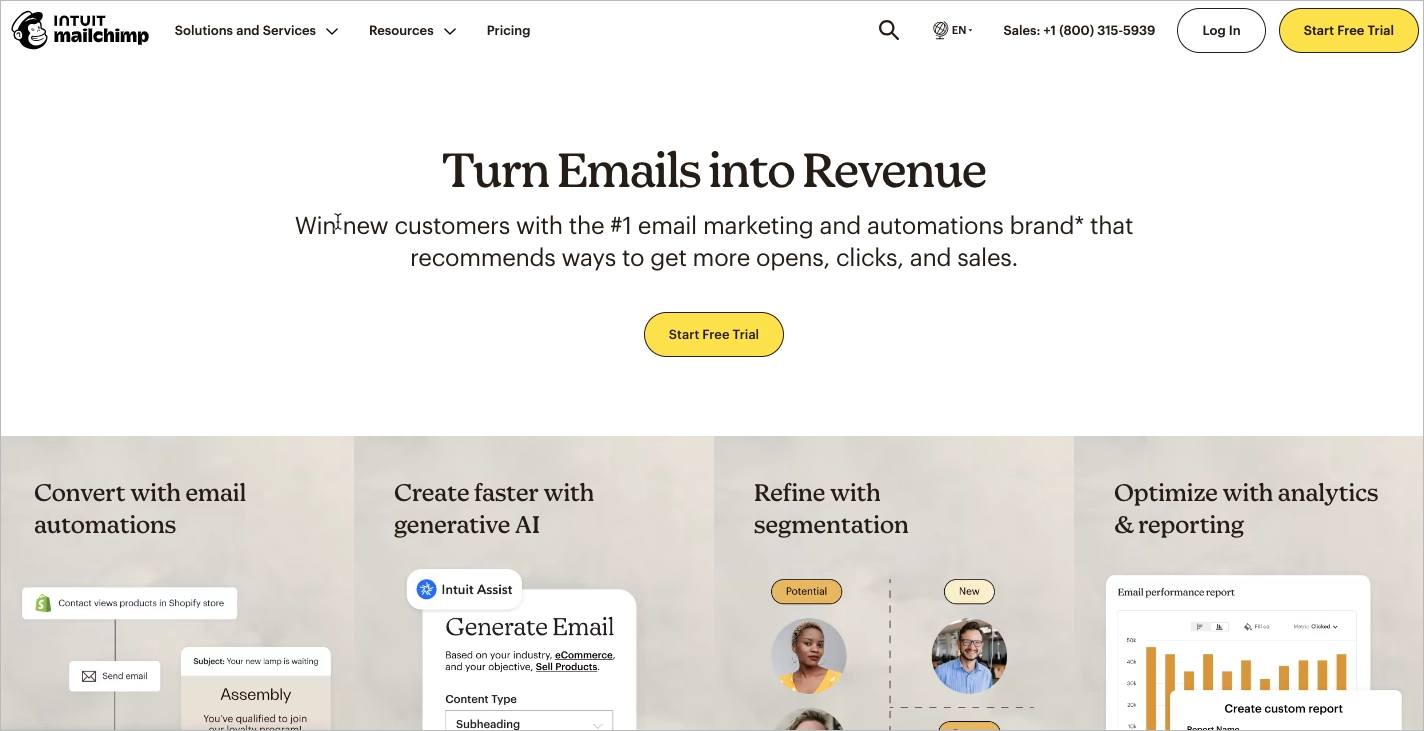
5. Best A/B Tool for User Experience (UX) Optimization: Optimizely
Best A/B tool for user experience (UX) optimization is Optimizely. It allows for extensive testing beyond simple A/B comparisons, including multivariate testing and personalization. This enables UX designers and marketers to delve deeper into user behavior and preferences, leading to a more refined user experience that can drive conversion rates.
Optimizely offers numerous features for running variation tests, such as:
- no-flicker snippet implementation
- collaborative experimentation
- design tools
- multi-page and multivariate tests
- speedy execution
- precise audience targeting
- statistical analysis
Optimizely has not disclosed the pricing of their Experiment product. Instead, they emphasize a customized approach, stating that they prefer to understand a customer’s specific needs to provide tailored pricing. This approach suggests that Optimizely is focused on offering personalized solutions that align closely with the unique requirements of each business, ensuring that features like A/B testing and conversion optimization are matched to the scale and scope of the project at hand.
If you are looking for an A/B testing platform that provides personalized solutions for optimizing customer experiences, Optimizely’s pricing model is designed to meet different business needs, from small-scale experiments to large enterprise-level deployments.
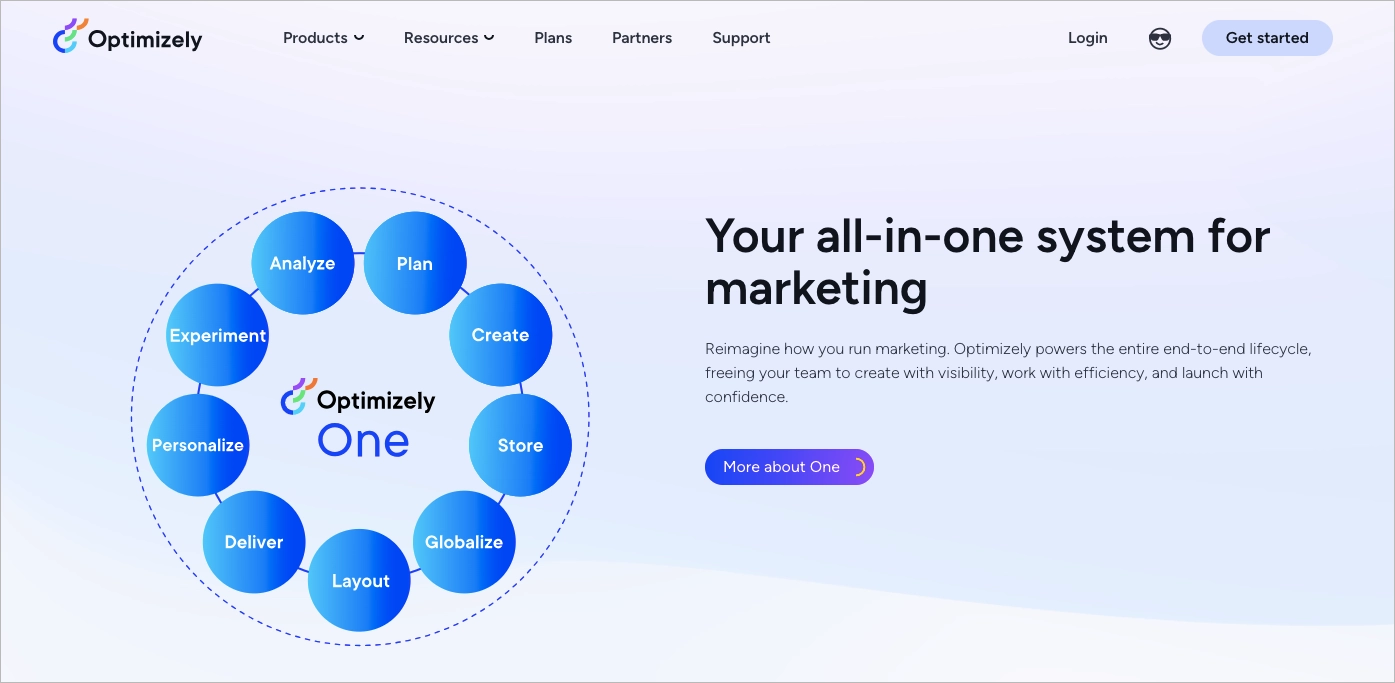
6. Best A/B Tool for Small Businesses: VWO
Best A/B tool for small businesses is VWO. It is favored for its balance of power and simplicity. It offers a visual editor for creating tests without the need for coding, making it accessible for small business owners who may not have technical expertise. Additionally, VWO provides clear insights and guidance on how to improve conversion rates, which is invaluable for growing businesses.
VWO’s test features are structured across different plans. Here are some of the key options available:
- A/B testing
- multivariate testing (MVT)
- split URL, mobile app, and server-side testing
- heatmaps
- conversion tracking
- segmentation
- campaign scheduling
VWO offers a variety of pricing tiers tailored to different user needs. The entry-level and no-cost plan, known as the Starter plan, is designed for small businesses and provides essential features for conversion optimization. For those requiring more advanced capabilities, such as multivariate testing and full-stack experimentation, VWO has more comprehensive plans available: Growth, Pro, and Enterprise, with costs starting at $339 per month, depending on the number of unique monthly visitors tested. The most complex solution costs up to $9,806.
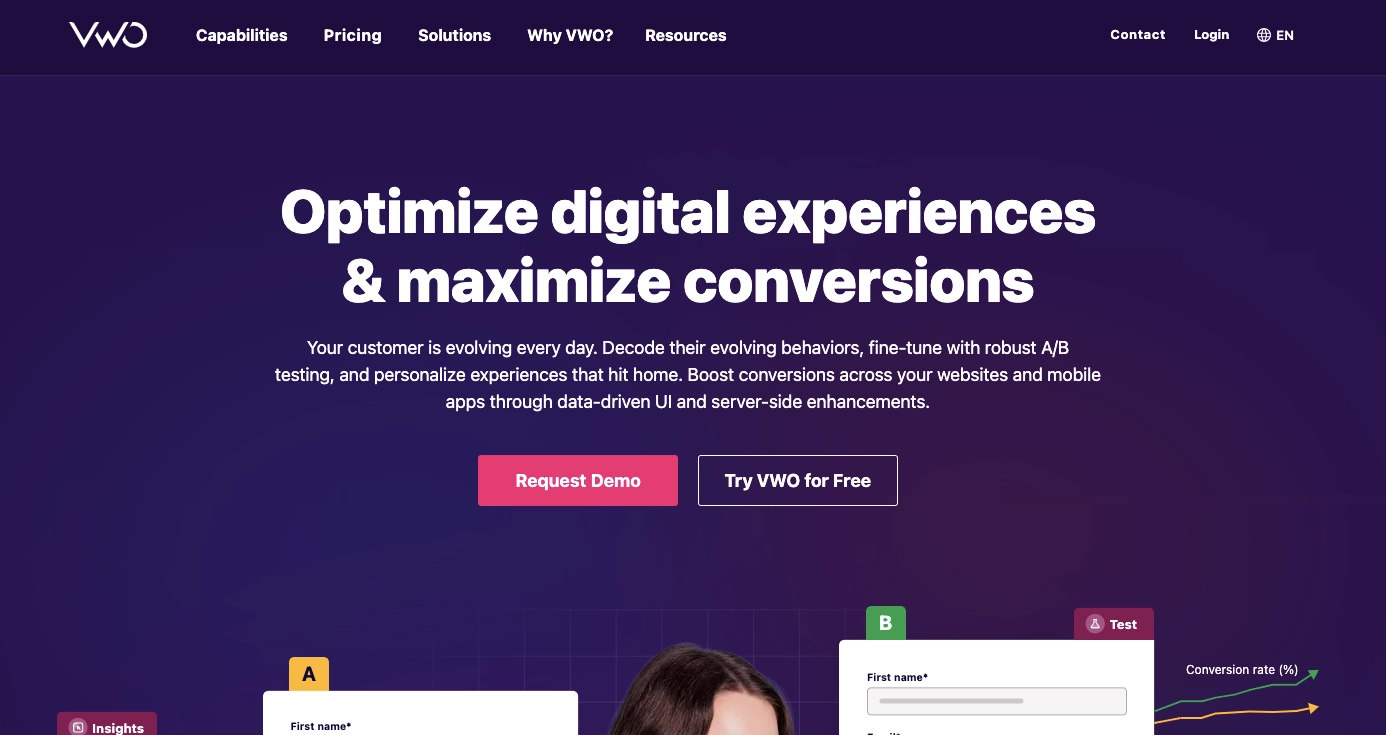
7. Best A/B Tool for Large Enterprises: Adobe Target
Best A/B tool for large enterprises is Adobe Target. It provides a robust testing environment that can handle the scale and complexity of big business operations. With its AI-powered personalization capabilities and integration with Adobe’s suite of marketing tools, it’s a powerful asset for enterprise-level conversion optimization efforts.
Some key features of Adobe Target include:
- AI-powered automation capabilities
- real-time optimization across platforms
- multivariate testing and multi-armed bandit testing
- comprehensive optimization
- personalization engine
- enterprise governance
Adobe Target offers a customized pricing model that is tailored to fit the unique needs of each organization, emphasizing its enterprise-grade software solutions. While there is no standard free plan, Adobe Target’s pricing is influenced by factors such as product options, the volume of digital properties, and omnichannel delivery capabilities. This means that whether you’re setting up for a small-scale operation or a large enterprise, Adobe Target can provide a personalized solution, with the cost reflecting the scale and complexity of your testing and personalization needs.
If you’re in search of an A/B testing platform that offers enterprise-level personalization and optimization, Adobe Target’s bespoke pricing ensures you get a solution that’s just right for your brand, with the ability to conduct unlimited A/B testing and leverage all optimization options for your campaigns.
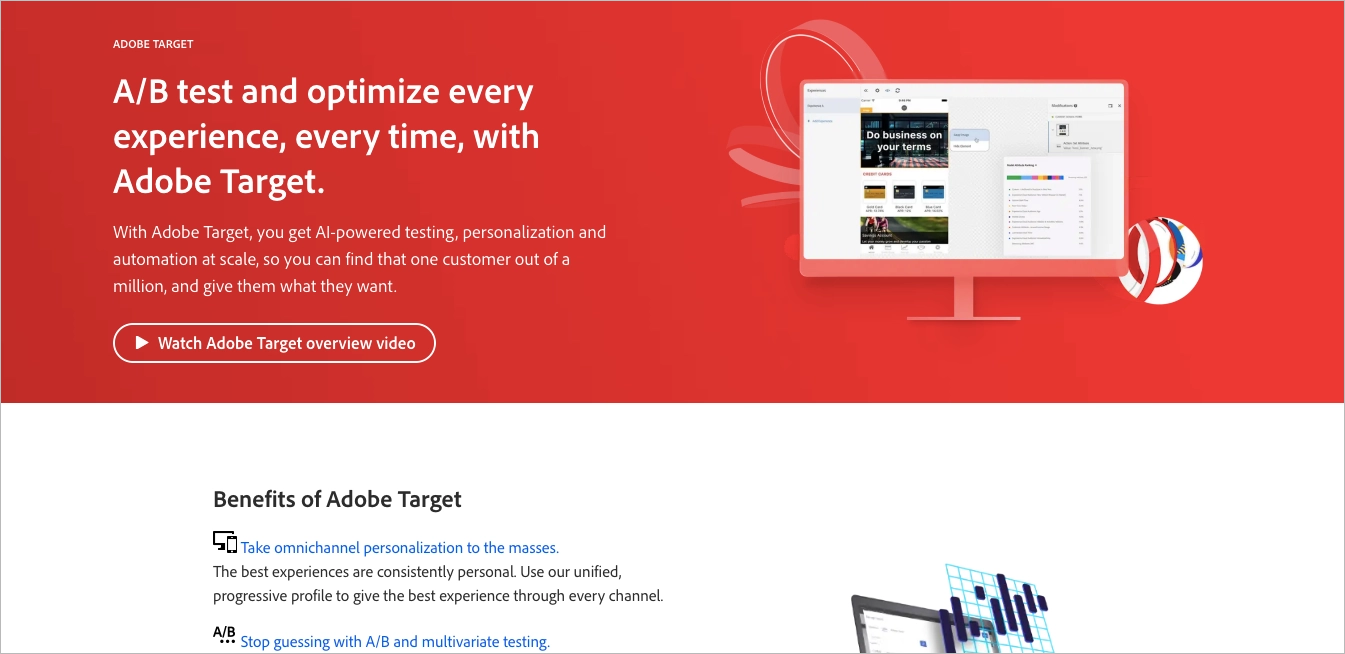
8. Best A/B Tool with AI Capabilities: AB Tasty
Best A/B tool with AI capabilities is AB Tasty. Its predictive algorithms can automate the optimization process, making it easier to deliver personalized experiences at scale. This can lead to significant improvements in conversion rates as experiences are tailored to individual user preferences.
AB Tasty’s suite of features and AI capabilities includes:
- predictive testing
- dynamic allocation of traffic
- AI-based targeting
- Stat Engine (Bayesian statistics)
- WYSIWYG editor
- segment building and advanced campaign triggers
- dynamic widgets (image auto-optimization, social proof, and urgency messaging)
AB Tasty offers a custom quote-based model rather than fixed pricing tiers. This personalized approach allows companies to access a suite of features for experimentation and personalization tailored to their unique traffic and conversion optimization goals. If your business is in need of a flexible and scalable A/B testing solution that can be tailored to your specific requirements, AB Tasty’s approach to pricing and feature access positions it as a great choice for those seeking to drive meaningful improvements in their online performance.
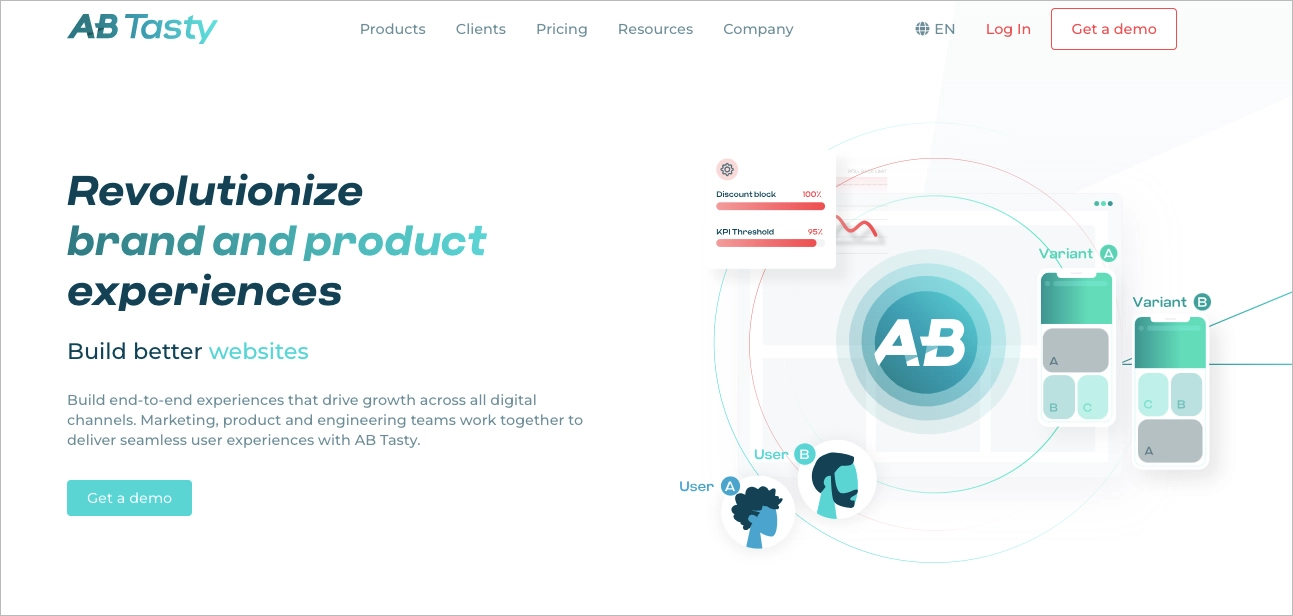
9. Best A/B Tool for Multi-channel Testing: Dynamic Yield
Best A/B tool for multi-channel testing is Dynamic Yield. It allows businesses to test across various channels, including web, mobile, and email. This multi-channel approach ensures that businesses can provide a consistent and optimized experience across all user touchpoints, which is critical for maintaining engagement and improving conversion rates.
Dynamic Yield offers the following features for multi-channel testing:
- multi-channel A/B/n testing
- journey optimization
- AI-driven revenue optimization and predictive targeting
- agile statistical engine
- unified client- and server-side testing
- automatic traffic allocation
- WYSIWYG editor
- analytics & reporting
In order to obtain pricing information, contact Dynamic Yield directly through their website or sales representatives. They offer a range of pricing plans tailored to different types of clients, from smaller businesses to large enterprises, and may include factors such as the number of users, volume of traffic, level of support, and access to advanced features.
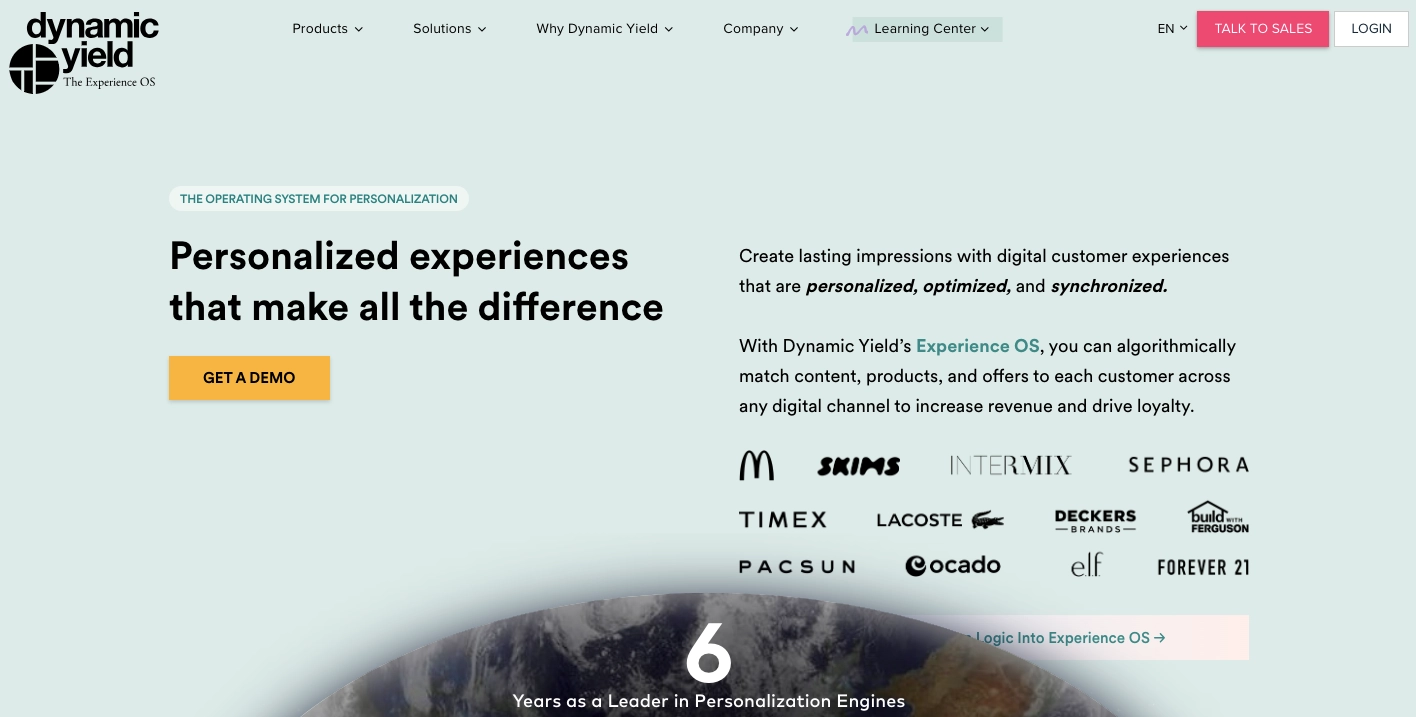
10. Best A/B Tool for Reporting and Analytics: Crazy Egg
Best A/B tool for reporting and analytics is Crazy Egg. Its heatmaps, scrollmaps, and confetti reports provide deep insights into how users interact with a website. This visual data helps businesses understand user behavior and make informed decisions about where to focus their optimization efforts for the greatest impact on conversion rates.
Crazy Egg offers a variety of features and A/B testing options that you can utilize to improve your website. These include:
- unlimited A/B tests
- heatmaps
- confetti (tracking ad campaign traffic) and overlay (analyzing click behavior)
- scrollmap
- analyzing snapshots, recordings, surveys, and CTAs
- goal-tracking
Crazy Egg’s pricing starts at $29/month for the Basic plan, offering 30,000 tracked pageviews, 25 snapshots, and unlimited A/B tests, suitable for businesses starting with conversion optimization. Scaling up, the Standard, Plus, and Pro plans increase pageviews and snapshots, with prices at $49, $99, and $249 per month, respectively, all including a 30-day free trial. For tailored needs, the Enterprise plan provides custom solutions. All plans are designed for comprehensive A/B testing and optimization.
If your focus is on detailed visitor insights and optimizing conversion rates through A/B testing, Crazy Egg’s suite of tools and scalable plans offer a robust solution for businesses of all sizes.
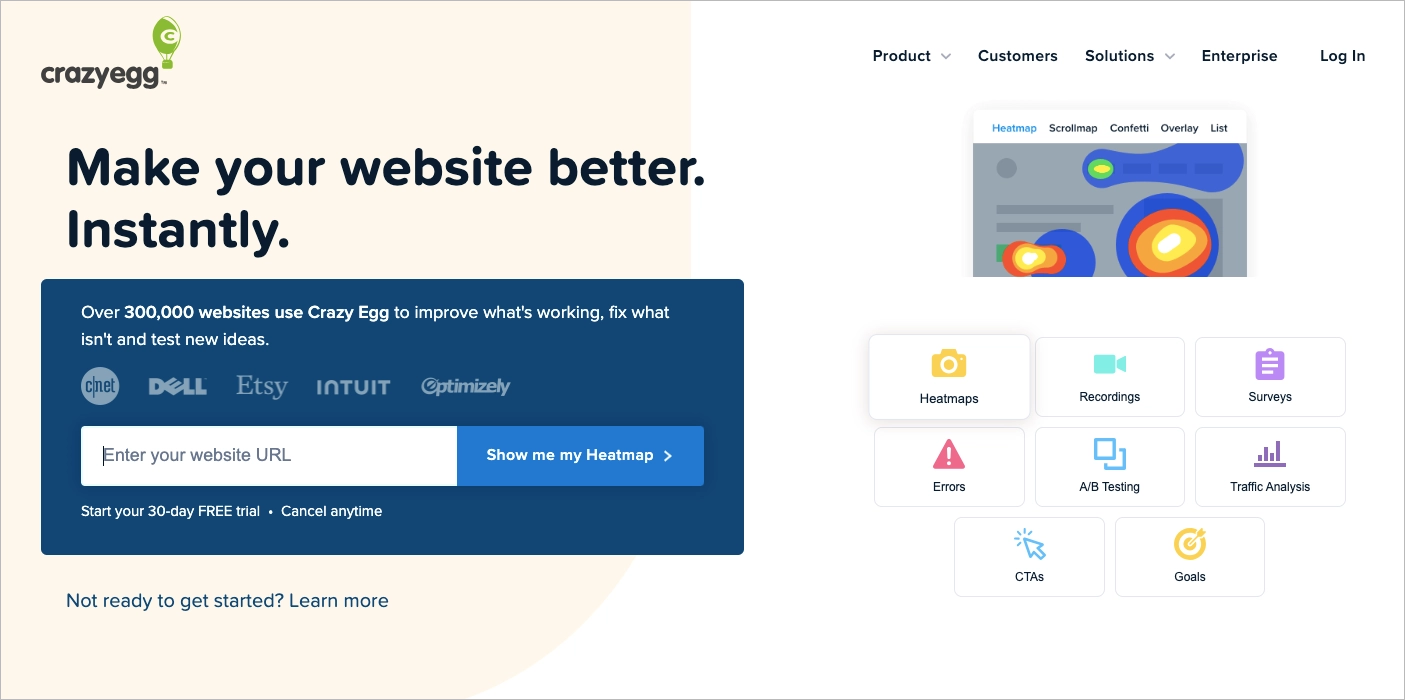
FAQ – Best A/B testing tools
What Is A/B Testing?
A/B testing is a marketing experiment where you split your audience to test a number of variations of a campaign and determine which performs better.
It’s a method to validate that any new design or change leads to positive outcomes. A/B testing is crucial for businesses because it substantiates decision-making with empirical evidence, thereby enhancing the likelihood of achieving higher conversion rates—the percentage of visitors who complete a desired action. This optimization of conversion metrics is pivotal for the profitability and growth of a business. Furthermore, it provides qualitative data that can help understand the reasons behind certain user behaviors, enhancing the depth of insights gained from the testing process.
As Optimizely, which specializes in customer experience optimization, defines in their Optimization Glossary, “testing takes the guesswork out of website optimization and enables data-informed decisions that shift business conversations from we think to we know“.
But this optimization magic doesn’t happen on its own. That’s where A/B testing tools come into play.
How Is A/B Testing Done?
A/B testing is done in a systematic process that entails formulating a hypothesis, configuring the variants, executing the test, and interpreting the results.
These phases involve creating two versions of a web page or app feature, usually labeled as ‘A’ and ‘B’. Each version has a variation in design, content, or functionality. Traffic is then directed to these variants at random, and the performance of each—typically measured by conversion rate, click-through rate, or another relevant metric—is analyzed. The version that outperforms the other indicates the more effective design for your target audience.
To run a split test, use this seven-point framework listed below:
- Collect data: Analyze high-traffic areas and pages with high bounce or drop-off rates.
- Identify goals: Determine the metrics to measure success.
- Generate test hypotheses: Prioritize ideas based on expected impact and implementation difficulty.
- Create different variations: Use A/B testing software to make changes to your website or app.
- Run experiment: Visitors are randomly assigned to control or variation.
- Wait for test results: Achieve statistically significant results.
- Analyze results: Determine if there is a significant difference between versions.
Before beginning the testing process, it’s crucial to plan out your route. As per Anthony Brebion in his article titled “Before you Start A/B Testing, Define your Roadmap,” creating a testing roadmap is “essential, not only for clearly defining your goals, priorities, and risks but also for setting out a timetable. With this, you can track the progress of your project, and keep all of your contributors informed.” And that can significantly impact the outcome.
The experimenting process is facilitated by high-end tools that make it easier for businesses to run tests, gather data, compare them, and analyze user behavior.
What Are A/B Testing Tools?
A/B testing tools are software solutions designed to facilitate the process of conducting controlled experiments to compare different versions of digital content. These tools streamline the process of creating variants, splitting traffic, collecting data, and analyzing results. They are integral to conversion rate optimization strategies as they help identify the most effective elements that lead to increased user engagement and successful conversions.
A/B testing tools can provide various testing and tracking capabilities, including:
- The capacity to test and analyze results without requiring modifications to the website or mobile experience
- Pattern matching
- Real-time testing with no latency and failover protection
Depending on the nature of your business and your specific needs, certain tools may be more suitable than others. For instance, some A/B testing tools are designed specifically for e-commerce websites, while others focus on mobile app optimization.
While some A/B testing tools may require coding knowledge, many softwares offer visual editors and no-code solutions, making them accessible to users without coding experience. This means that even if you’re not a tech-savvy professional, you can still leverage the power of A/B testing tools to optimize your website or app and achieve better results.
Additionally, the price of these tools can vary greatly. While it may be tempting to go with the cheapest option, it’s important to note that the trial results won’t be statistically significant. Therefore, look for tools that are “either integrated with good qualitative and quantitative research tools or are brilliant standalone tools, making them more than capable of producing statistically significant results,” as VWO, one of the market leaders in this space, advises in its guide.
What Are The Primary Features To Look For In an A/B Testing Tool?
There are eight primary features to look for in an A/B testing tool: usability, statistical analysis capabilities, targeting options, reporting, integration with other tools, visual editing capabilities, multivariate testing, and support & resources.
When selecting an A/B testing tool, its usability is crucial. A tool with an intuitive interface allows users to quickly set up and run tests, regardless of their technical expertise. This ensures that even those with limited technical skills can effectively utilize the software and optimize their websites, apps, or marketing campaigns.
Statistical analysis capabilities are crucial as they provide a solid basis for decision-making. The tool should have robust statistical algorithms to ensure the accuracy and reliability of test results.
Targeting options allow for more specific and focused testing. The ability to segment your audience and target specific user groups can lead to more insightful and actionable results.
Reporting is another vital feature. The tool should provide clear, detailed, and easily understandable reports that provide a comprehensive view of the test results.
Integration with other tools is necessary for a smooth and efficient workflow. The testing tool should be able to integrate seamlessly with your existing marketing, analytics, and data tools.
Visual editing capabilities make the testing process much easier, especially for users without coding experience. This feature allows you to make changes to your website or app visually without altering the code.
Multivariate testing allows you to test multiple variables at once. This can provide a more comprehensive view of how different elements interact and affect user behavior.
Finally, support & resources are essential. The tool should provide extensive documentation, tutorials, and customer support to help you get the most out of your testing efforts.
With the right combination of features, a testing platform can significantly enhance your website optimization and marketing campaign effectiveness.
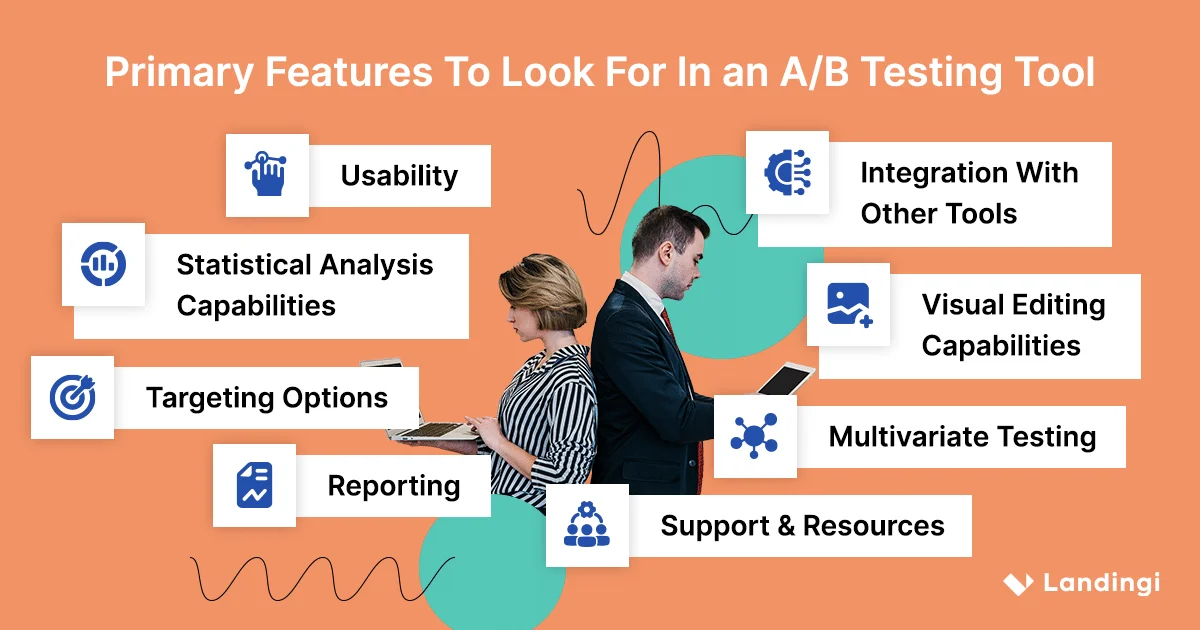
What are the different types of tests that can be conducted using these tools?
Apart from the standard A/B tests, these tools can facilitate split URL testing, where different versions of a page are hosted at different URLs; multivariate testing, which analyzes the performance of various combinations of page elements; and multi-page or funnel testing, which evaluates a user’s journey through a series of pages.
Which A/B testing tool is deemed the most user-friendly for beginners?
The most user-friendly A/B testing tools for beginners are VWO and Landingi. Both platforms stand out with an intuitive interface and user-friendly navigation. They provide support from technical experts, a blog with informative articles and updates, success stories, a help center, e-books, and webinars, ensuring users have the support and information they need to get the most out of their A/B testing efforts.
Is prior knowledge of coding necessary to use A/B testing tools?
No, prior knowledge of coding is not necessary to use A/B testing tools. While some A/B testing softwares may require coding skills, many tools offer a visual editor and no-code solutions, making them accessible to users without coding experience. This means that even if you’re not a tech-savvy professional, you can still leverage the power of A/B testing tools to optimize your website or app and achieve better results. For example, tools like Adobe Target, Landingi, and Mailchimp do not require coding skills for A/B testing.
Are there certain campaign objectives that can’t be effectively measured using A/B testing?
Yes, campaign objectives that can’t be effectively measured using A/B testing are not directly measurable or immediate, such as long-term brand building or customer lifetime value. These objectives often require a different set of marketing research and analysis techniques.
In what ways do A/B testing tools provide insights that inform campaign strategy adjustments?
A/B testing tools provide insights that inform campaign strategy adjustments by analyzing user interactions and responses to different campaign variables. This data-driven feedback equips marketers with the knowledge of what changes resonate with users, thereby informing adjustments to optimize campaign performance.
How do A/B testing tools handle user privacy, especially in light of regulations like GDPR?
A/B testing tools are designed to be compliant with privacy regulations like GDPR by incorporating features such as consent management, data anonymization, and secure data processing. They ensure that user data is handled responsibly and with respect for user privacy.
How do you write an A/B testing report?
To write an A/B testing report, one must effectively present the objectives, hypotheses, methodologies, results, and actionable recommendations. The report should be clear and concise, enabling stakeholders to understand the outcomes and make informed decisions.
How do A/B testing tools ensure the accuracy and reliability of test results?
To ensure accuracy and reliability, A/B testing tools use statistical algorithms to determine the significance of results. They also provide controls to filter out anomalies and ensure that the data reflects genuine user behavior.
Try Landingi For Free
In a market saturated with conversion optimization tools, it’s helpful to try them out for free to see if their features meet your needs. Landingi provides a 14-day free trial and a free plan that allows you to explore the platform’s features, such as A/B testing, campaign scheduling, integrations, and a mobile page editor. Go ahead and give Landingi a try!

